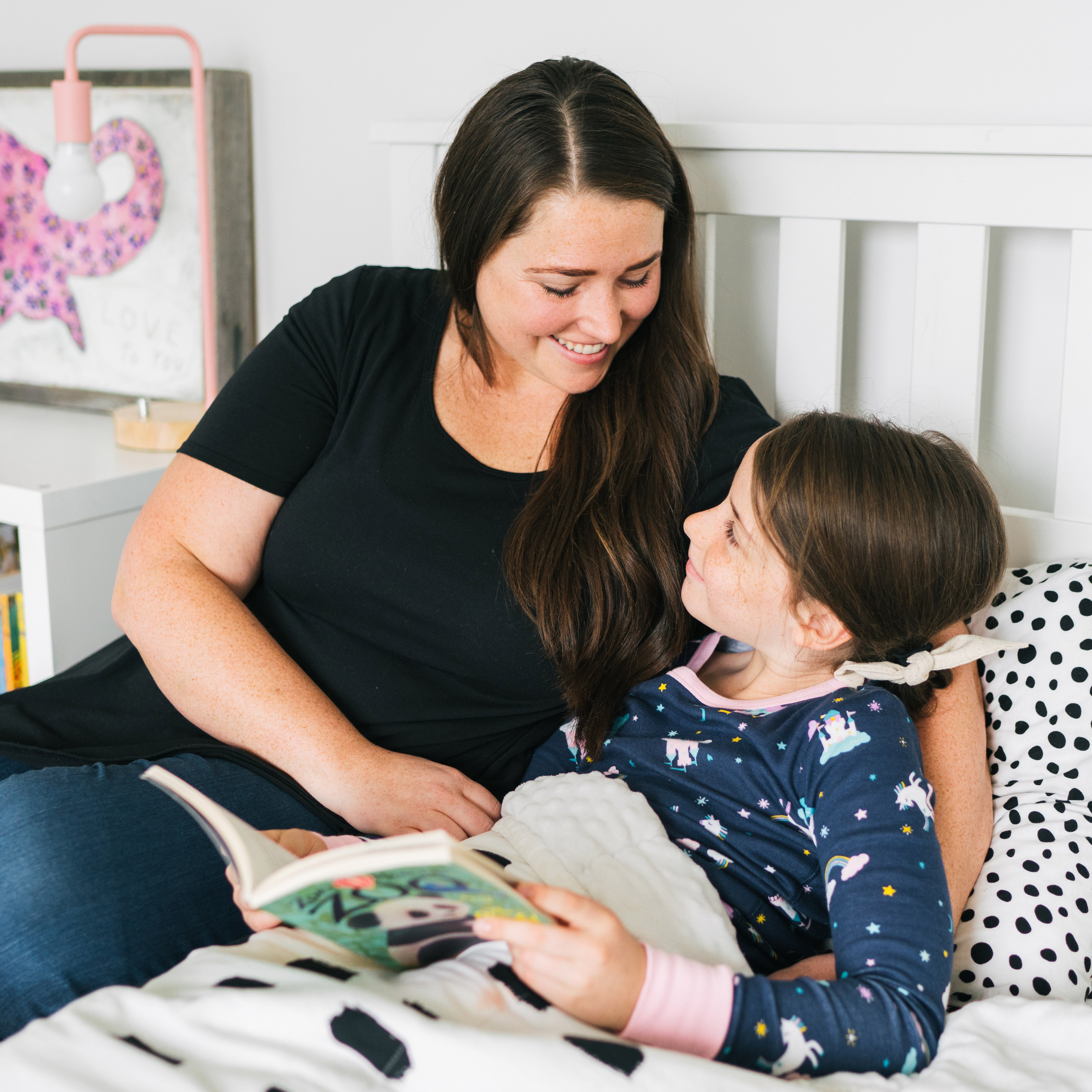Generation stress. Kids today are more stressed than ever. The pressures of school, social media, friends, and jam-packed schedules don’t do them any favors.
As adults, we know all about stress. Our fast-paced, “can-do-it-all” society affects us tremendously, so why wouldn’t it affect our kids?
How does stress affect us? It influences our mood, well-being, behavior, and health. One study on stress found that we were affected by the nature, number, and persistence of the stressors, as well as, our own biological vulnerability (genetics), psychosocial resources, and learned levels of coping.
How we stress is impacted by our genetics BUT also how we have learned to cope with stress. That’s HUGE!
This means we all have the opportunity to learn how to “stress” better. Let’s check out these 5 steps to stress reduction.
Step 1: Adopt the Teachings of Simplicity Parenting
Kim John Payne is a researcher, counselor, and private consultant who co-wrote the book (with Lisa M. Ross), Simplicity Parenting, about simplifying our lives to help with stress. Though it focuses on parenting, you don’t have to have kids to benefit from his advice.
Throughout his book, he focuses on the “the four pillars of ‘too much’”:
- Environment=Too much stuff. He recommends purging your child’s room and choosing the best toys for creative play. Think fewer batteries.
- Rhythm=Too many choices. Creating daily routines so your kids know what is coming next.
- Schedules=Too fast. Allowing time for kids to be bored by creating distraction-free zones, and limiting extra-curricular activities.
- Filters=Too much information. Limiting screen time, avoiding helicopter parenting, and avoiding adult topics arounds kids.
Children should be allowed to be children. That means providing them time to play, explore, and focus on kid-things.
How can adults benefit from these pillars? Same thing, just adjusted to them. Focus on a clean and clutter-free environment, create routines to help your day run smoothly, open up your schedule to allow time for fun, and take time to turn off the news, social media, and anything else that might bring you down!
Step 2: Use Stress-Management Techniques
Now, even if you simplify everything in your life, you can’t completely avoid stress. So, here are a few techniques to help your kiddos calm down.
- Music. Whether it’s your kid’s favorite song or something more classical, music can be healing, relaxing, soothing, and de-stressing. But music can be everywhere, birds outside, ocean waves at the beach, or singing your own songs.
- Deep Breathing. Breathe in deeply, hold the breath for a moment, then slowly release it. Repeat until calm.
- Stretching. Slow down and release some built-up tension in the muscles.
- Guided Imagery and Relaxation Scripts. Another great option for calming down kiddos who are stressed or might need to wind down for bedtime. We have both of those in this blog here.
- 5-4-3-2-1 Technique. Identify five things you can see, four you can hear, three you can feel, two you can smell, and one you can taste.
Other great ways to chillax? Playing, exercising, heading out to explore nature, and laughing.
Step 3: Reframe Stress
We are going to go through stressful situations in life no matter what we do, so instead of associating stress with all things bad, we need to teach our children (and ourselves) that a little stress can help us.
When we stress about a situation, our brain rewires itself to remember and learn from the experience. Remember the first time you got to drive a car? You were beyond stressed, but as you continued to drive and practice, you got used to it.
The key word here is, a ‘little’ amount of stress. Chronic stress is not good for you. Here are a few ways to reframe stress:
- Know that stress is a natural part of life.
- It comes and goes.
- Certain stressful situations can be beneficial if you learn from them.
- Turn catastrophic thinking (ex: my life is over) to a tamer version (this was a hard situation but I’ll learn from it)
When you feel yourself getting stressed, try some of the stress-management techniques listed above.
Step 4: Practice Problem-Solving
Sometimes the best solution to de-stressing is simply to act.
- Name and validate emotions. Ask your child how they are feeling and then repeat it back to them (showing that you validate their feelings).
- Help them process their emotions. Do they want to talk? Take a walk? Take a bath? Or try any of the stress-management techniques?
- Brainstorm solutions. Your child is stressed about a math test coming up? Create a study schedule, find a tutor, ask the teacher for more help. Just take steps towards a solution.
Talk through these things with your child and help them think about the positive and negative consequences of each idea. This will help if the initial plan doesn’t go as planned.
Step 5: Encourage A Growth Mindset
When you teach your child to Reframe Stress, you are encouraging them to have a Growth Mindset (we have a blog all about a Fixed Mindset vs. a Growth Mindset here).
Here’s a quick rundown of the two:
| FIXED MINDSET | GROWTH MINDSET |
| Ignores feedback | Learns from failure |
| Doesn’t try | Puts in effort |
| Gives up easily | Keeps going |
| Mistakes are bad | Embraces challenges |
| Avoids challenges | Learns from feedback |
Fixed Mindset: You believe that your intelligence, talents, and abilities are fixed.
Growth Mindset: You believe that you can develop your intelligence, talents, and abilities.
Having a growth mindset gives you the opportunity to change whatever is stressing you out. Hard test? Study for it! Big piano recital coming up? Practice for it!
There isn’t any room for excuses!
5 Affirmations/Statements to Encourage a Growth Mindset
- Mistakes help me learn and grow.
- I haven’t figured it out YET.
- I can do hard things.
- Learning is my superpower.
- I grow my brain by learning hard things.
A growth mindset allows you to GROW, where a fixed mindset keeps you stuck.
Looking for More Help with Stress?
Now that we know that a little stress is good, along with the proper techniques to help us manage our stress, what do you do when you’ve exhausted all of those resources?
Add some Zen Drops to your life
Zen Drops provides natural stress relief to help you feel calm, cool, and collected:
- Includes Passionflower extract to increase GABA levels to promote a calm state-of-mind*
- Natural chocolate flavor
- Safe for children and adults, ages 3 and older
- Non-habit forming
- Can be added to liquid or taken direct to mouth
Calming effects are usually noticed within 10-30 minutes of taking Zen Drops.
Feeling stressed? Time for some Zen (Drops)!
*These statements have not been evaluated by the Food and Drug Administration. This product is not intended to diagnose, treat, cure, or prevent any disease.







1 comment
Leo Pierson
This gives a nice new view.
Leave a comment
All comments are moderated before being published.
This site is protected by hCaptcha and the hCaptcha Privacy Policy and Terms of Service apply.